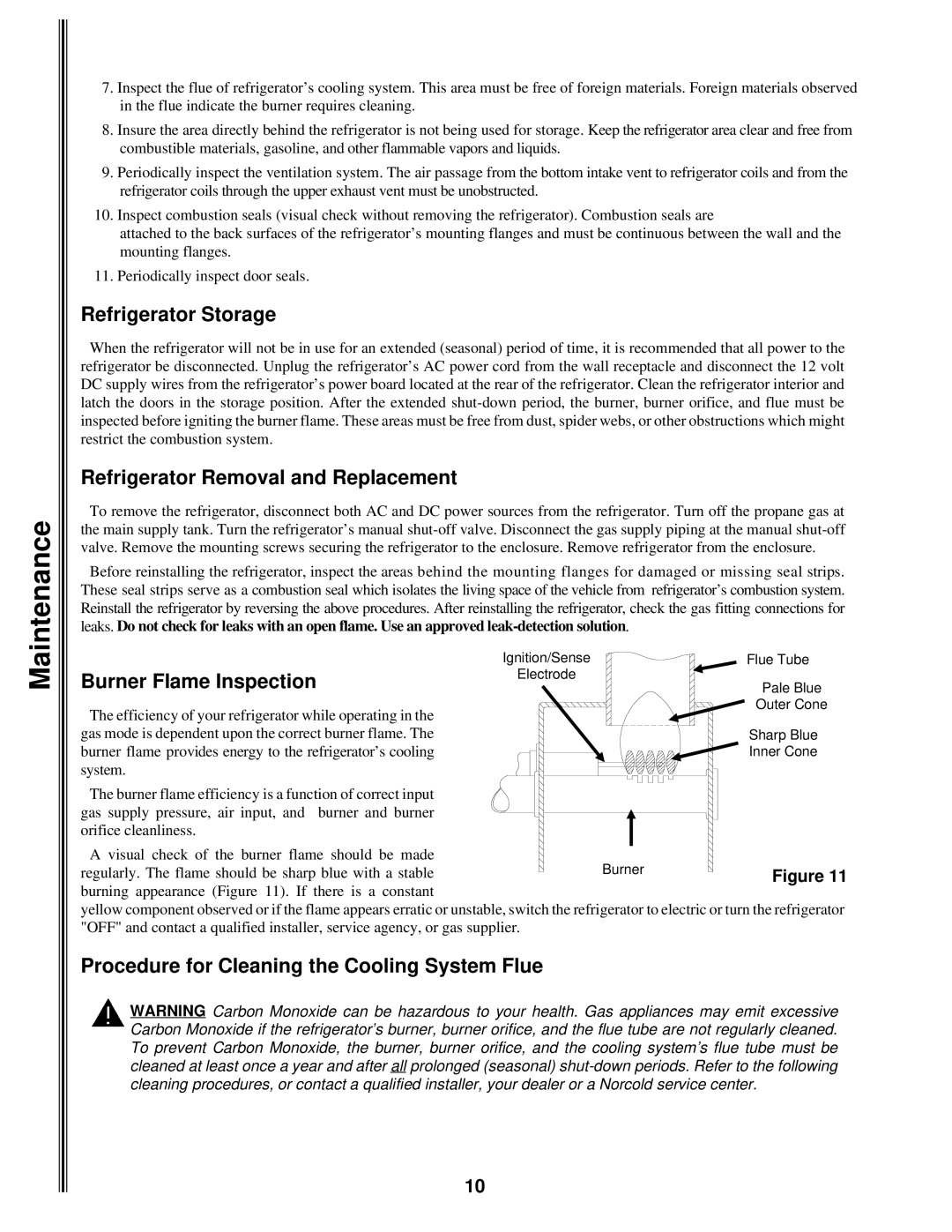9183, 9182, 9163, 9162 specifications
The Norcold 9162, 9163, 9182, and 9183 refrigerators are designed specifically for RV enthusiasts seeking reliable and efficient cooling solutions. These models offer a blend of functionality, durability, and innovative technology, ensuring that your food and beverages remain chilled during your travels.One of the standout features of the Norcold series is their dual cooling system. Each model can operate using either propane gas or electric power, allowing for flexible energy use depending on your available resources. This dual-source capability ensures that your refrigerator can maintain optimal performance whether you are hooked up to shore power or running off-grid with propane.
The Norcold 9162 and 9163 models boast a spacious interior, making them ideal for longer trips where storage space is at a premium. With adjustable shelving and door bins, users have the flexibility to organize items efficiently, ensuring that even larger items can fit with ease. The beautiful, sleek design complements any RV decor, marrying aesthetic appeal with practicality.
In contrast, the 9182 and 9183 models feature a slightly larger capacity to accommodate bigger families or extended journeys. These refrigerators are engineered with high-density foam insulation, providing excellent thermal efficiency. This means they can retain the cold even in warmer climates, minimizing the need for frequent energy consumption.
One of the impressive technologies incorporated into this series is the advanced temperature control system. Users can easily set their desired temperature with a simple dial, ensuring food safety and optimal preservation. Additionally, the internal LED lighting provides clear visibility of contents, even in low-light conditions.
Safety is another crucial aspect of Norcold refrigerators. Each model is equipped with a safety shut-off feature that automatically disables the propane system under certain conditions, like a low voltage or excessive heat. This ensures peace of mind when it comes to safety while on the road.
Furthermore, the durability of the Norcold units is noteworthy. With heavy-duty construction and quality materials, these refrigerators are built to withstand the rigors of travel. They are also designed for easy maintenance, with accessible components for hassle-free cleaning and servicing.
In summary, the Norcold 9162, 9163, 9182, and 9183 models combine versatility, innovative technology, and safety features, making them a popular choice among RV users. Their ability to operate efficiently on multiple power sources, ample storage space, and robust design ensure that these refrigerators deliver reliable performance for all your camping adventures. With Norcold, you can embark on your journeys with confidence, knowing that your food and drinks will always be kept cool and refreshing.

